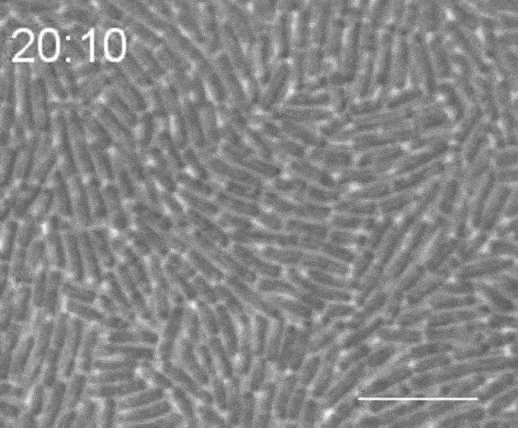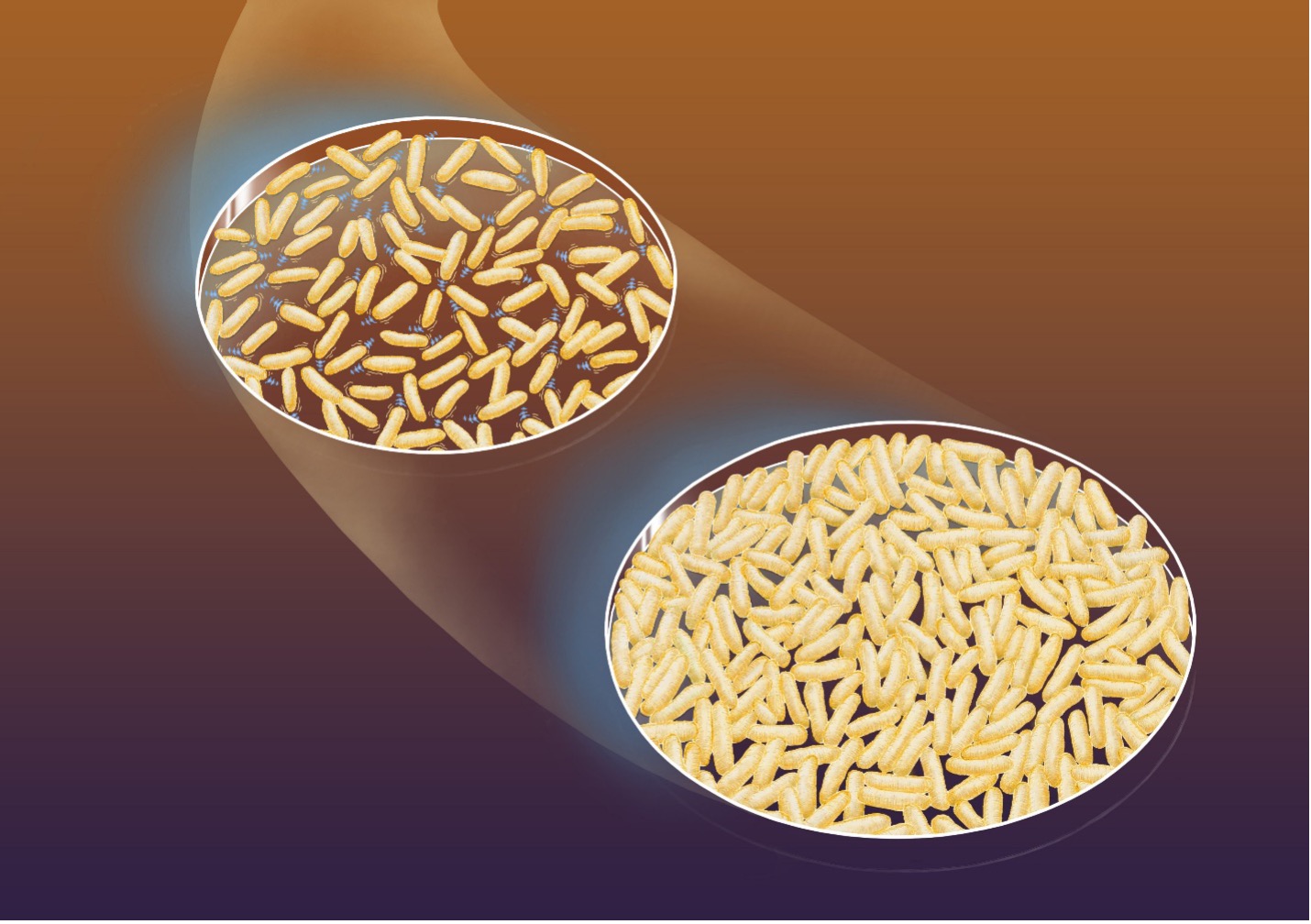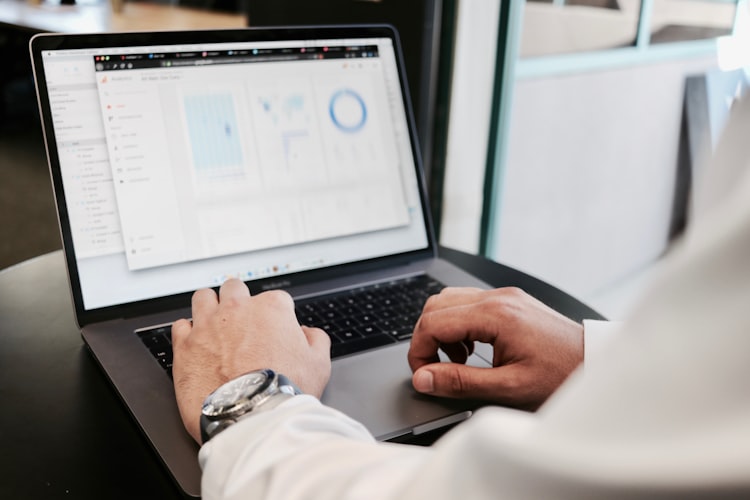
Bacterial glass. This GIF shows the E. coli transitioning into a glassy state as their density increases and they can no longer move. © 2024 H. Lama, M. J. Yamamoto, Y. Furuta et al./ PNAS Nexus
Dense E. coli bacteria have several similar qualities to colloidal glass, according to new research at the University of Tokyo. Colloids are substances made up of small particles suspended within a fluid, like ink for example. When these particles become higher in density and more packed together, they form a “glassy state.” When researchers multiplied E.coli bacteria within a confined area, they found that they exhibited similar characteristics. More surprisingly, they also showed some other unique properties not typically found in glass-state materials. This study contributes to our understanding of glassy “active matter,” a relatively new field of materials research which crosses physics and life science. In the long term, the researchers hope that these results will contribute to developing materials with new functional capabilities, as well as aiding our understanding of biofilms (where microorganisms stick together to form layers on surfaces) and natural bacterial colonies.
What do butter, soap and ink all have in common? They certainly don’t all taste good, but they are all types of colloids, substances made of particles suspended in fluid. When the concentration of particles is low, then the substance will be more liquid, and when it is high, then it becomes more solid (think of a dried-out inkwell). When this happens, the substance enters a glassy state, whereby the movement of the particles is restricted. However, although it may feel hard, unlike with other solids, the particles do not form fixed patterns but are jumbled together randomly. This is similar to the molecular structure of glass.

Illustration of change to glassy state. This illustration shows the vitrification – the transformation into a glasslike state – of E. coli over time as their numbers become more dense and compacted. © 2024 Tomo Narashima (LAIMAN)
Researchers have now found that the bacteria E. coli can behave in a similar way. “Since bacteria are very different from what we know of as glass, it was surprising that many of the statistical properties of glassy materials were the same for bacteria,” said Associate Professor Kazumasa Takeuchi from the Department of Physics at the Graduate School of Science. “However, the bigger surprise for us was that in-depth analysis revealed not only a similarity to the standard properties of glass, but also other properties beyond that. Our results call for an extension of our current understanding of the physics of glass.”
Takeuchi was inspired to carry out the experiment after observing the behavior of bacteria in a different study over 10 years ago. At that time, he saw that when a population of bacteria became very dense, it abruptly stopped moving and he wanted to understand why.
The main challenge was to create an environment in which the bacteria could equally thrive and multiply to form a dense population. To achieve this, the team used a device they had previously developed, which enabled them to equally distribute nutrients through a porous membrane to all the bacteria. The researchers then observed the bacteria by microscope over 5-6 hours.
As the number of E. coli increased, they became caged in by their neighbors, restricting their ability to swim freely. Over time, they transitioned to a glassy state. This transition is similar to glass formation, as the researchers noted a rapid slowdown of movement, the caged-in effect and dynamic heterogeneity (whereby molecules travel longer distances in some areas but hardly move in others).

Packed microdomains. This color overlay highlights the orientation of groups of bacteria in different areas. © 2024 H. Lama, M. J. Yamamoto, Y. Furuta et al./ PNAS Nexus
What made this bacterial glass different to other glasslike substances was the spontaneous formation of “microdomains” and the collective motion of the bacteria within these areas. These occurred where groups of the rod-shaped E. coli became aligned the same way. The researchers were also surprised that the way the bacteria vitrify (turn into a glasslike state) apparently violates a physical law of typical thermal systems. What we characteristically know as glass, including colloidal glass, is classed as thermal glass. However, recently researchers have started to explore glassy states, like the one reported in this paper, which aren’t considered thermal glass but share many of the same properties.
“Collections of ‘self-propelled particles’ like we see here have recently been regarded as a new kind of material called active matter, which is currently a hot topic and shows great potential,” explained Takeuchi. “Our results on bacterial glass are along this line of research, extending this concept to the realm of glassy materials. In the long term, our results might contribute to developing novel materials with some functions that are impossible with ordinary materials.”
Next the team wants to explore how this phenomenon plays out with other diverse species of bacteria in different environments. Ongoing research has so far shown that there are different ways in which cells can become crowded together. Takeuchi said: “Our results indicate that dense bacteria can drastically change their mobility and mechanical properties at the population level, by a minute change in the cell density. This information could be used to regulate or control dense bacteria formations in the future. Through our work, we hope to make deeper and broader connections between statistical physics and life science.”







